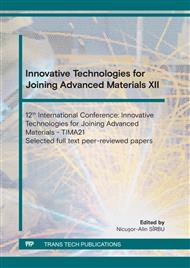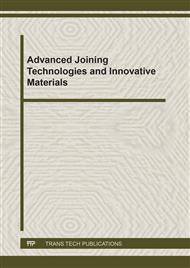p.15
p.25
p.35
p.45
p.51
p.57
p.67
p.83
p.95
Simulation of Thermal Field in Eutectic Microwave Bonding for Electrical Connection of Photovoltaic Cells
Abstract:
Sustainable development requires green energy and low carbon footprint in manufacturing sector of photovoltaic systems. The electrical connections of photovoltaic cells need to have low electrical resistance in order to reduce the electrical losses and therefore to improve the performance of the photovoltaic panels. This paper aims to present researches related to bonding of wires that connect solar cells by using microwave technology. The microwave bonding has the main advantage that offers fast bonding but, in the same time, this technology does not offer stability of the thermal heating. Two different unwanted phenomena like thermal runaway and plasma arc discharge often lead to the damaging of copper and aluminum wires used in electrical connection. The study presented in this paper is focused on simulation of the thermal field developed in copper wires in order to optimize the bonding process and increase the quality of products. The simulation of the thermal field has been done using Fourier equations for conducting heating in copper materials and eutectic alloys. The simulation model has been validated through experimental heating using a 6 kW water-cooled microwave generator controlled by a matching load auto-tuner for best transfer of the power from generator to copper wires. The temperature has been measured in real time using an infrared pyrometer for metals with 2.3 μm spectral range and measurement range between 0o C and 7000 C. The study is finalized with elaboration of mathematical model for microwave-injected power as function for temperature developed in copper wires that can be applied with success in further microwave bonding applications of copper wires. In addition, the electrical resistance of bonded wires was measured in order to collect feedback for improving the microwave bonding process.
Info:
Periodical:
Pages:
51-56
Citation:
Online since:
June 2022
Keywords:
Price:
Сopyright:
© 2022 Trans Tech Publications Ltd. All Rights Reserved
Share:
Citation:



